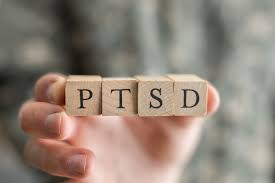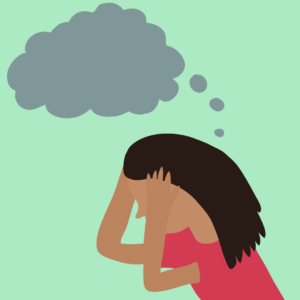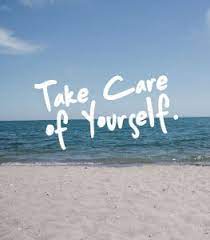If you are one of the estimated 8 percent of Americans who have PTSD, then you know that it can be a difficult disorder to live with. The good news is that there are many treatment options available that can help you recover from your trauma. In this blog post, we will discuss steps that can help you get on the road to recovery. We will also talk about the different types of treatment available for PTSD patients.
Contents
Understanding PTSD
 PTSD is a mental health condition that’s triggered by a terrifying event — either experiencing it or witnessing it. It is described as post-traumatic stress disorder and can lead to a range of issues including depression, anxiety, flashbacks, and insomnia. People with PTSD are often haunted by the memories of their trauma and may feel like they’re in danger even when they’re not.
PTSD is a mental health condition that’s triggered by a terrifying event — either experiencing it or witnessing it. It is described as post-traumatic stress disorder and can lead to a range of issues including depression, anxiety, flashbacks, and insomnia. People with PTSD are often haunted by the memories of their trauma and may feel like they’re in danger even when they’re not.
Moreover, studies have found that people with PTSD are more likely to suffer from physical health problems, including heart disease and chronic pain. If a person has PTSD, their risk of developing heart disease is doubled. Because when you’re constantly in a state of fight-or-flight, your body is on high alert, which can take a toll on your physical health.
This is important for you to know because, as someone who has PTSD, you may not only be dealing with the psychological effects of trauma but also the physical ones. So seek out help and understand how severe your symptoms are. As there’s no one-size-fits-all approach to treating PTSD, working with a professional will help you to find the right PTSD treatment.
When To Seek PTSD Treatment?
As PTSD is a serious mental health condition, it is important to seek professional help as soon as possible. Also, several signs and symptoms may indicate that someone is struggling with PTSD. These include:
- Experiencing flashbacks or nightmares about the traumatic event
- Avoiding places, people, or activities that remind them of the trauma
- Having negative thoughts and feelings about oneself or the world
- Feeling hopeless, detached, or numb
- Losing interest in activities that were once enjoyed
- Experiencing changes in sleep patterns or mood
- Having difficulty concentrating or remembering details about the trauma
- Being easily startled or feeling on edge
- Engaging in risky or self-destructive behaviors
It is important to understand the signs and symptoms because they will help you determine when to seek PTSD treatment. If you or someone you know is exhibiting any of these signs and symptoms, it is important to reach out for help. It is also important to understand that not everyone will experience all of these symptoms. Some people may only experience a few, while others may experience many.
PTSD treatments vary depending on the individual and their unique needs. There are a variety of different treatment options available, and it is important to work with a professional to find the best option for you.
PTSD Treatment Options
There are several different treatment options available for those suffering from PTSD. The most important thing is to seek professional help and find a treatment that works for you. Here are steps to recover from PTSD:
Art therapy
 For PTSD, it is essential to process the trauma. One way to do this is through art therapy. This can be an incredibly cathartic experience, as it allows you to express yourself in a safe and controlled environment. Art therapy aims to help you make sense of the trauma and to start to heal. There are several ways to do this, and it is important to find a therapist that you feel comfortable with.
For PTSD, it is essential to process the trauma. One way to do this is through art therapy. This can be an incredibly cathartic experience, as it allows you to express yourself in a safe and controlled environment. Art therapy aims to help you make sense of the trauma and to start to heal. There are several ways to do this, and it is important to find a therapist that you feel comfortable with.
Moreover, art therapy is believed to focus on the here and now, which can be incredibly helpful for those who are struggling to come to terms with their trauma. It can also help you to start to see yourself in a more positive light.
Cognitive Behavioral Therapy (CBT)
CBT is a type of therapy that aims to help you change the way you think and react to situations that trigger your symptoms. It can be an effective treatment for PTSD, but it usually takes place over several weeks or months. A therapist helps you identify your negative thoughts and beliefs about the trauma and teaches you how to replace them with more realistic and positive ones.
In addition, CBT aims to help you manage your symptoms more constructively. For example, your therapist will help you find healthy ways to cope with intrusive thoughts and flashbacks, instead of avoiding or numbing behaviors. CBT is usually provided by a licensed mental health professional, such as a psychiatrist, psychologist, or licensed clinical social worker.
Exposure therapy
Exposure therapy is a type of CBT that helps people confront their fears. In exposure therapy, people gradually approach their feared situations, objects, or thoughts. It is a way to help people face their fears and learn to control their reactions. As in PTSD, it is important to work with a therapist to make sure that exposure therapy is done safely.
Moreover, ERP works to change the way a person responds to their triggers. This type of therapy teaches people healthy coping mechanisms to deal with their triggers. For example, a person might learn to use breathing exercises to calm themselves down when they are triggered. ERP can be an effective treatment for PTSD, but it is important to work with a therapist who is experienced in this type of therapy.
Eye Movement Desensitization and Reprocessing
 This is a type of therapy that helps you process memories and emotions that are causing you distress. EMDR can be used to treat PTSD, anxiety, and depression. This therapy works by having you focus on a specific memory while you move your eyes back and forth. This movement helps to process the emotions attached to the memory.
This is a type of therapy that helps you process memories and emotions that are causing you distress. EMDR can be used to treat PTSD, anxiety, and depression. This therapy works by having you focus on a specific memory while you move your eyes back and forth. This movement helps to process the emotions attached to the memory.
For example, if a person was in a car accident, they may relive the event during EMDR sessions. The therapist would help the person focus on the memory of the accident while moving their eyes back and forth. This movement would help to process the emotions attached to the memory, such as fear or anxiety.
Stress Inoculation Training
SIT is considered a type of cognitive-behavioral therapy (CBT). It was originally developed to treat anxiety disorders, but it has also been found to be an effective form of PTSD treatment. Usually, SIT involves three phases: education, skills training, and application/consolidation.
In the education phase, the therapist will educate the patient about PTSD and its symptoms. The therapist will also teach the patient about different coping mechanisms and how to deal with triggers.
In the skills training phase, the patient will learn different relaxation techniques and how to use them in stressful situations. The therapist will also help the patient practice these techniques so that they can be used in real-life situations.
And finally, in the application/consolidation phase, the patient will put what they have learned into practice. They will work with the therapist to identify and manage triggers, and they will also continue to practice relaxation techniques. So, this technique is believed to be a helpful technique for PTSD treatment.
Medications
Medications are considered an important part of PTSD treatment. Antidepressants, anti-anxiety medications, and antipsychotics are commonly prescribed to help control symptoms. While these medications can be helpful, they do have potential side effects and should be monitored by a healthcare professional.
Moreover, medications should be used in conjunction with other PTSD treatments, such as therapy, to be most effective. Also, you must discuss with your doctor your condition and other medications you are taking before starting any new medication.
These are some of the professional PTSD treatment options that are available. It is important to remember that everyone experiences PTSD differently, so not every treatment will work for every person. It may take some trial and error to find the right combination of treatments that work best for you. But do not get discouraged—with the right help, you can overcome PTSD.
How To Manage PTSD Alone?
 Sometimes, people who have PTSD try to manage their symptoms without professional help. This is called self-treatment or self-care. There are many ways to do this, but it’s important to remember that everyone is different and what works for one person might not work for another.
Sometimes, people who have PTSD try to manage their symptoms without professional help. This is called self-treatment or self-care. There are many ways to do this, but it’s important to remember that everyone is different and what works for one person might not work for another.
So, when you try to self-manage PTSD it’s important to keep in mind that PTSD is a serious condition. And, if you’re having trouble managing your symptoms on your own, it’s important to seek professional help. There are a few things you can do to self-manage PTSD:
Identify your triggers
Once you know what triggers your PTSD symptoms, you can try to avoid those triggers or be prepared for them when they happen. This is an important part of self-managing PTSD. When you identify your triggers, you can also start to develop a plan for how to deal with them. For example, if you know that loud noises trigger your symptoms, you can avoid places where there will be loud noises. This way, you can prevent your symptoms from getting worse.
Write down your thoughts and feelings
Writing down your thoughts and feelings can help you process what happened to you. It can also help you work through your emotions and start to heal. This is also considered journaling where you can track your healing journey. This can be done either electronically or with a physical notebook and pen. Also, you can write each day, or whenever you feel the need to get something off your chest.
Create a support system
A support system can be made up of family, friends, or even a support group for people with PTSD. You can talk to your friends, family, or loved ones who will be more than willing to help you out and support you during this difficult time. If you feel like talking to someone who understands what you’re going through, consider joining a PTSD support group. Talking to someone will always make you feel better and will help to lessen your symptoms.
Learn relaxation techniques
Relaxation techniques can help you control your body’s response to stress. Some relaxation techniques include:
- Deep breathing
- Progressive muscle relaxation
- Guided imagery
These techniques are often used in combination with other treatments, such as exposure therapy. But in self-help form, they can be used to ease symptoms and promote better sleep. For example, progressive muscle relaxation can be done at bedtime to help you fall asleep.
Take care of yourself
 This is always number one on any list of things to do when you’re not feeling well, and it’s even more important when you’re dealing with PTSD. Make sure you’re getting enough sleep, eating well, and exercising regularly. These things will help reduce your stress levels and give you the energy you need to face each day. Also avoid alcohol and drugs, which can make your symptoms worse.
This is always number one on any list of things to do when you’re not feeling well, and it’s even more important when you’re dealing with PTSD. Make sure you’re getting enough sleep, eating well, and exercising regularly. These things will help reduce your stress levels and give you the energy you need to face each day. Also avoid alcohol and drugs, which can make your symptoms worse.
Moreover, give yourself time to heal. Don’t try to push yourself too hard or expect too much too soon. Everyone heals at their own pace, so don’t compare your journey to anyone else’s. Just focus on taking things one day at a time and giving yourself the grace and compassion you need to get through this tough time.
These are some self-help tips that can make a big difference, but it’s also important to get professional help if you’re struggling with PTSD. With the right treatment, you can start to feel better and live a fulfilling life.
Can PTSD Be Cured Permanently?
This is a difficult question to answer because it is different for everyone. Some people may find that their symptoms lessen over time and they are eventually able to live without much interference from PTSD. Others may find that their symptoms continue to be a major problem in their life, even after treatment.
It is important to remember that even if someone does not completely ‘cure’ their PTSD, there are still treatments and coping mechanisms that can help them manage their symptoms and live a relatively normal life. A cure for PTSD may not be a realistic goal for everyone, but remission is.
Moreover, it is important to seek professional help as soon as possible after a traumatic event. The sooner someone gets treatment, the better their chances are of achieving remission. Because it is difficult to know how someone will respond to treatment, it is important to be patient and work with a qualified professional.
With the right PTSD treatment, you will manage to improve your condition and live a better life. Also, you should keep in mind that it is a process that requires time, effort, and patience. In case you know someone who suffers from PTSD, do not hesitate to offer your help and support.
Conclusion
Conclusively, it is believed that PTSD treatment is possible through several methods that should be tailored to the individual. Some people may only require medication while others need weekly therapy sessions. The key is to not give up and to find the right combination of treatments that work for you. Remember, you are not alone in this battle.
However, you should also keep in mind that some people do not ever recover from PTSD and live with the symptoms for the rest of their lives. If this is the case, it is important to find ways to cope and manage the symptoms. You can also contact Therapy Mantra for more information and resources.
Therapy Mantra is a platform that provides online therapy, counseling, and other numerous services. We connect you with licensed therapists and counselors who can help you work through your PTSD treatment. Our services are affordable, convenient, and confidential. Contact us today to learn more about how we can help you. You can also book an online counseling and therapy session or download our free Android or iOS app.


